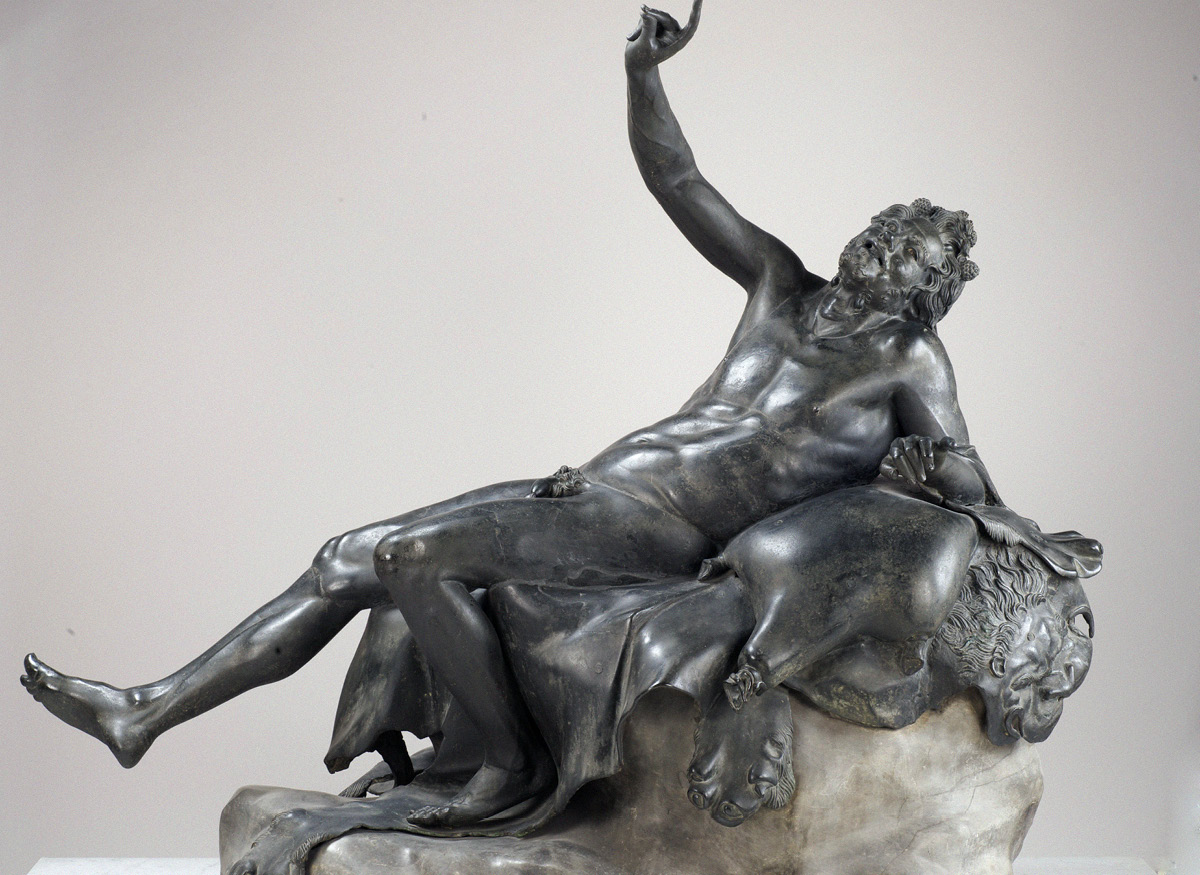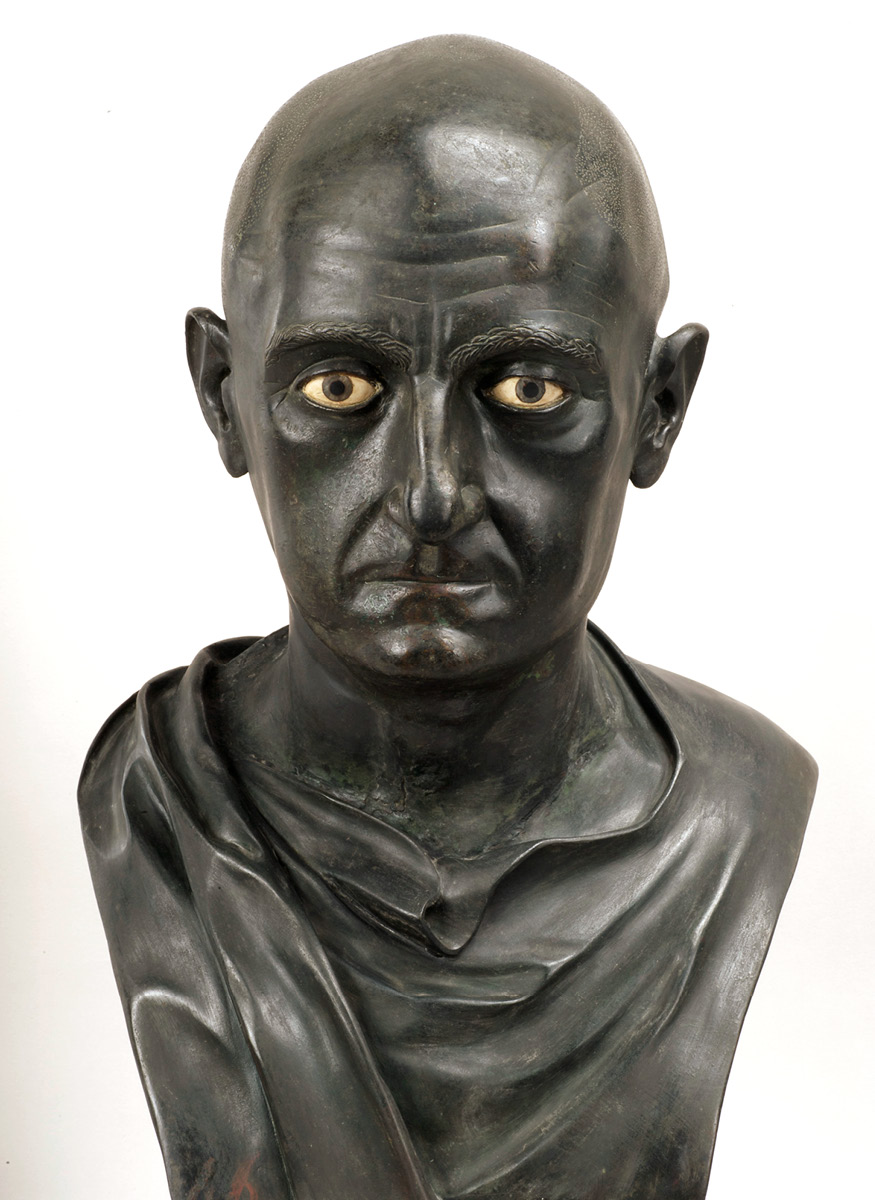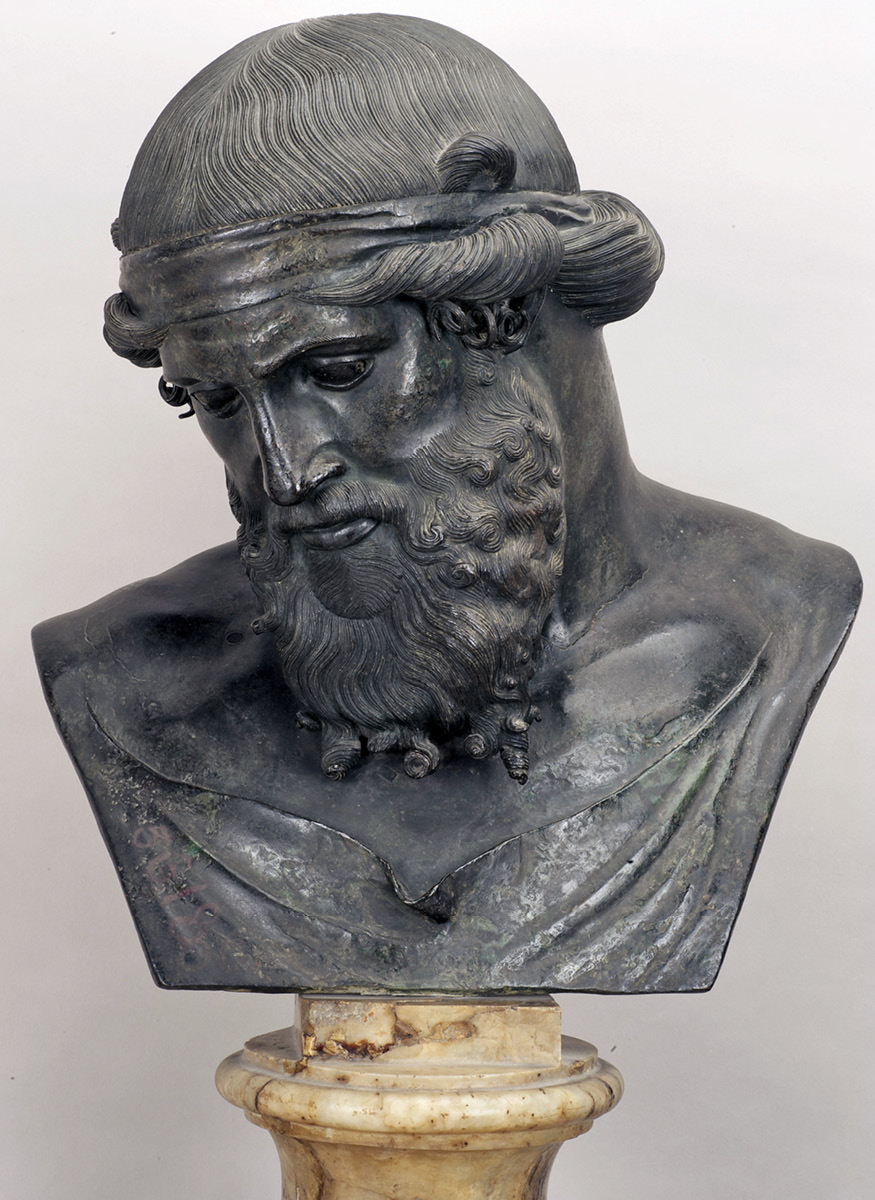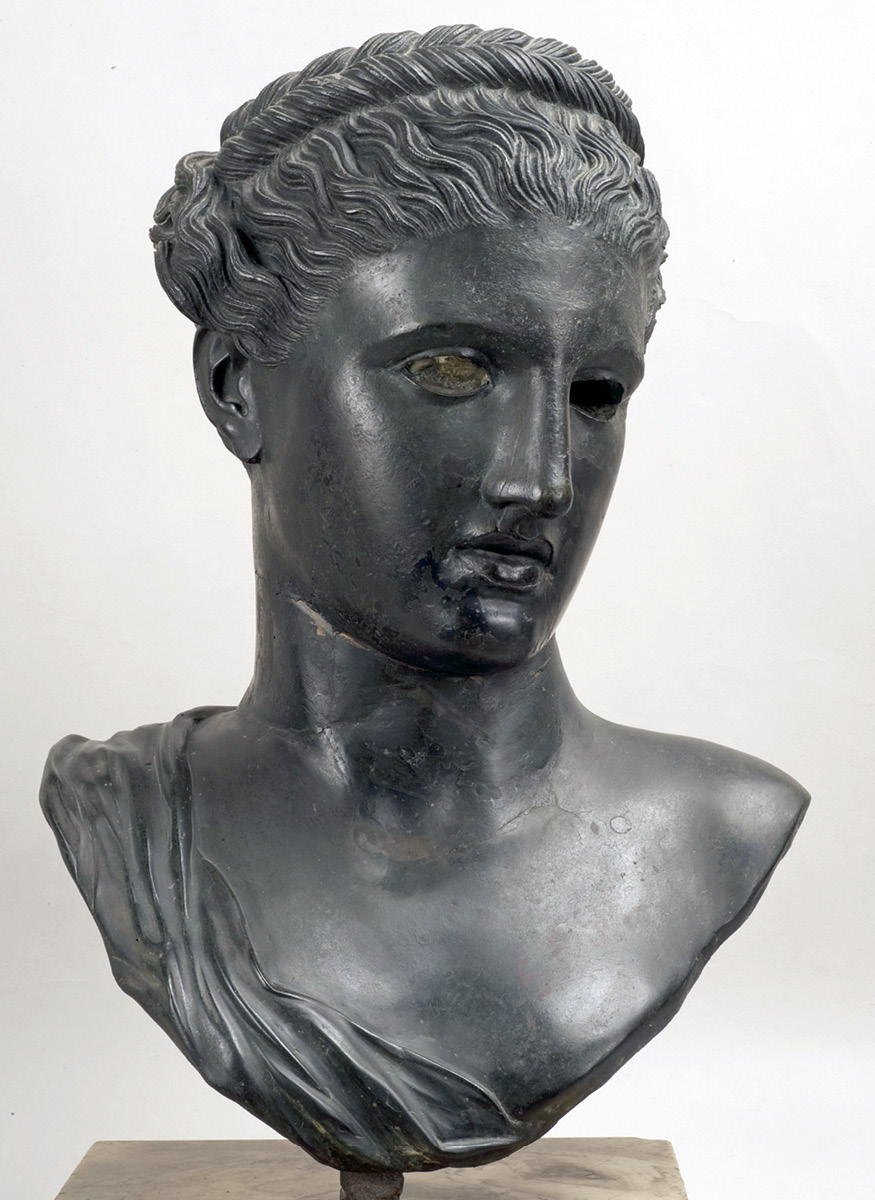Villa of Papyri
The Villa of Papyri was discovered in the suburban area of Herculaneum in the mid-18th century and was named after the extraordinary treasure of carbonized papyrus scrolls, which later turned to be mainly texts in Greek language about Epicurean philosophy. It can be considered a tangible example of a so called otium villa, a seaside retreat where Roman aristocracts “would wear Greek dress” and would committ themselves to a mix of leisure and culture. The discovery of almost one hundred sculptures, originally decorating the rooms, colonnades and gardens of the villa, represented another extraordinary moment. Bronze sculptures were quite rare in 18th century’s antiquity collections, therefore, together with mosaics and frescoes, they provided a great contribution to spread the fame of Museum collections all over Europe.
The gallery is located on the second floor of the Museum and sculptures are displayed according to the specific room they originally decorated: indeed, 18th century’s excavation diaries and journals have made it possible to reconstruct with an incredible precision the place where each of them was found. Some homogeneous groups, in terms of iconography and semantic field, have also been identified, providing scholars with important elements, in order to make hypothesis on the date of the building and the identity of the owner.
Allusions to Hellenistic courts – documented by the portraits of Greek kings, philosophers and orators, as well as by the reproductions of sculptures, belonging to the same cultural milieu – led to search for the villa’s owner among the representatives of Roman aristocracy in the late Republic. Another group of works, belonging to a second phase in the life of the villa, shows an inspiration from Greek art dating to the second half of the 5th century BC, namely highlighting the adoption of different cultural models, which alternatively characterized the first decades of the imperial age. Together with statues, busts and herms, the display is enriched by some paintings pulled from the building and two reproductions of the machine invented in the mid-18th century by Father Antonio Piaggio, for unrolling papyri.









